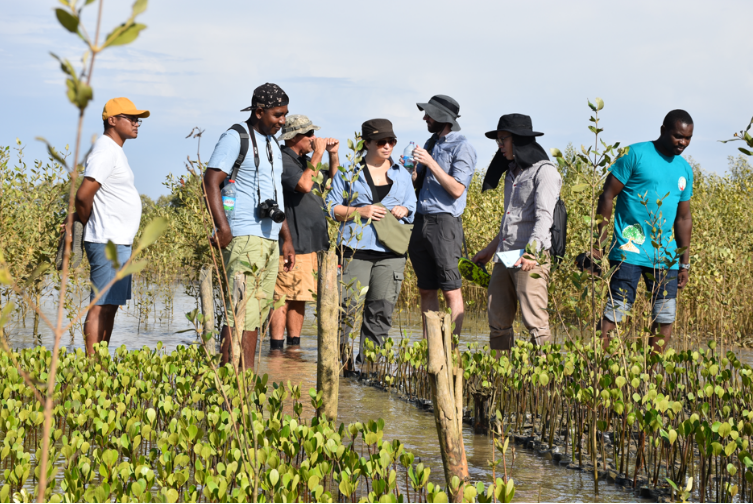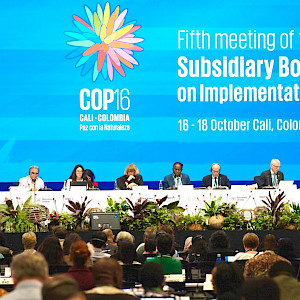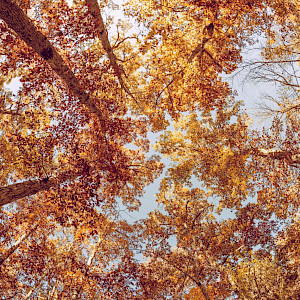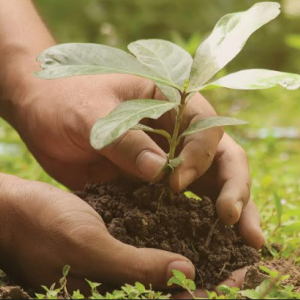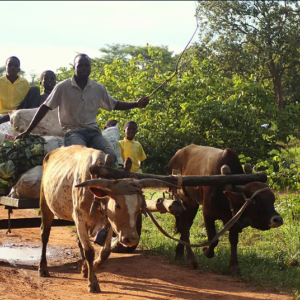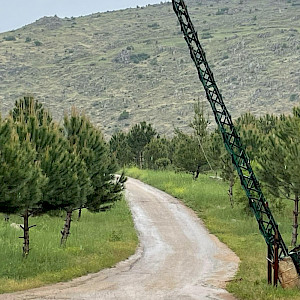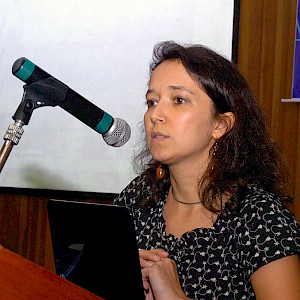The Alley of Baobabs is a world-famous dirt road lined by ancient 30-meter-tall trees that appear to be inverted, as if their roots are reaching toward the sky. The 800-year-old mammoths, in the city of Morondava in the Menabe region of western Madagascar, are remnants of a dense tropical forest that once covered the island nation.
Just below the Alley of Baobabs, along the nearby coastline, are remnants of another tropical forest: the mangrove ecosystem. When intact, the mangroves are a wall of tangled roots. They act as a barrier against waves and storms and harbor a healthy fish population that can breed and feed within the protective root system. And like all trees, they help purify water, clean the air, and capture carbon to fight climate change.
Rolland Randria, a fisherman and father of eight from a small village outside of Morondava, has watched these valuable mangroves disappear over his 50 years of life. He doesn’t blame his neighbors for cutting the woody root systems. He knows that Madagascar is one of the poorest nations in the world, with an estimated 80% of people living in poverty. People here, many of whom make only $2 a day, are desperate for resources, and mangroves can fix weather-ravaged homes and provide fuel for cooking. Unfortunately, as the mangroves disappear, so do the fish and protection from storms, compounding the cycle of poverty.
Coastal communities recognize the value of mangroves but have struggled with over-exploitation of the woody ecosystem. Rolland and 80 others from his village, mostly women, have an association dedicated to restoring mangroves, but it hasn’t been easy. In exploited areas, now devoid of vegetation, sand dunes remain mobile and unstable, and mangrove restoration efforts are difficult. Planting mangrove seedlings directly in degraded areas has yielded an average survival rate of less than 10 percent.
This dismal survival rate changed in 2021, when Mr. Randria’s association started working with the United States Department of Agriculture (USDA) Forest Service and partners. With support from the U.S. Agency for International Development (USAID), the USDA Forest Service assessed the tidal, soil and environmental conditions of proposed restoration sites and then adjusted mangrove propagation and outplanting methods to match ecosystem needs.
They then worked with eight Menabe-based community associations like Mr. Randria’s toproduce and plant 58,681 robust mangrove seedlings in degraded areas in 2022. Monitoring in 2023 show a 90 percent survival rate, nine times the success of previous efforts.
"The success on the ground deserves to be copied in a large government project,” said Mr. Tsiry Niaina Randrenjarivelo, Regional Directorate of Fisheries and the Blue Economy in Menabe.
Mr. Randrenjarivelo has participated in Forest Service mangrove workshops and is keen to replicate the methods and the success. A new government project, called SWIOFISH 2, plans to use the Forest Service approach to restore 1,000 hectares of mangroves in the Menabe region.
Another Malagasy government representative, the Regional Directorate of Forestry and Sustainable Development, has sought replication of the Forest Service’s approach by moving a terrestrial-based mangrove nursery to one that is located in the tidal zone of the Kimony village. The adapted approach will allow the seedlings to be developed in conditions similar to those in which they will be planted, which should improve the likelihood for survival.
NGOs in the region have sought Forest Service technical advice and have visited Forest Service-supported nurseries in the village of Betania to hear from community members and learn from their practices. The NGO Alliance Voahary Gasy (AVG) is currently scaling up its mangrove nurseries and seed production efforts with community members in Betania who have participated in Forest Service training sessions. AVG plans to restore 192 hectares of mangroves.
The quick adoption of the Forest Service’s approach to mangrove restoration illustrates the success small projects can have when indigenous knowledge and scientific practice are thoughtfully combined and when natural resource management practitioners share their best practices. The continued leveraging of the approach and of fruitful collaborations could lead to significantly improved mangrove forest cover in the Menabe region in the coming years. That improved cover will enhance livelihoods for coastal communities and improve Madagascar’s resilience to climate change. The result will be healthier forests and a healthier people.


